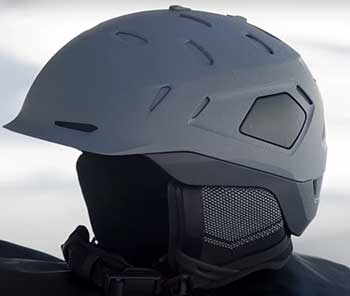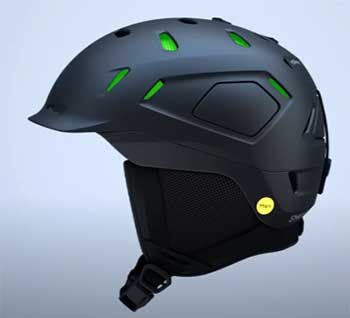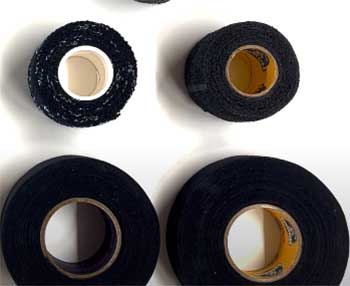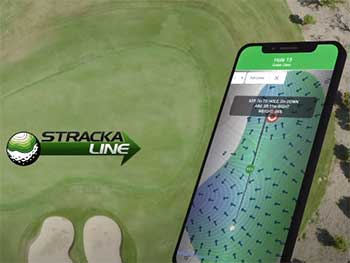Hitting the slopes with quality gear can make your day on the mountain more enjoyable and safer. A good helmet is one of the most important investments for any skier or snowboarder.
With so many options on the market, it can be tricky to decide which one is right for you.
In this comprehensive guide, we’ll focus on a detailed comparison of two popular models – the Smith Nexus and Vantage MIPS helmets. We’ll examine the key features, real user reviews, pricing, and how to determine which is the better choice for your needs.
Let’s dive in!
Helmet Comparison At-a-Glance
Before diving into the details, here is a high-level overview comparing the key specs and features of the Smith Nexus and Vantage MIPS ski helmets:
| Feature | Smith Nexus | Smith Vantage MIPS |
| Construction | In-Mold | In-Mold |
| Shell Material | ABS Plastic | ABS Plastic |
| Liner Material | Hybrid SL | Aerocore |
| Adjustment System | AirEvac 2 Adjustment | AirEvac 2 Adjustment |
| Ventilation | 21 Vents | 20 Vents |
| Weight | 18.1 oz | 19.4 oz |
| MIPS Protection | No | Yes |
| Price | $140 | $180 |
Smith Helmet Technology Overview
First, a quick look at Smith and some of the common technologies across their ski helmet lineup:

- In-Mold Construction – This fuses the outer shell directly to the inner EPS foam liner for a lighter and stronger helmet. Smith uses in-mold construction on all their helmets.
- Koroyd Protection – Some high-end Smith lids add Koroyd, a unique material made of extruded tubes that collapse upon impact to absorb energy. Not found on the Nexus or Vantage.
- Aerocore Foam – Uses small perforations in the EPS foam to improve ventilation and dissipate impacts. Featured on the Vantage but not the Nexus.
- AirEvac Ventilation – Adjustable vents that help control airflow and internal temperature regulation. Both helmets have the AirEvac system.
- MIPS Protection – Helps reduce rotational force to the brain caused by angled impacts. Included on the Vantage but not the Nexus.
Now let’s explore how the Nexus and Vantage specifically compare across the factors most important for ski helmets.
Key Differences Between Smith Nexus And Vantage MIPS Helmets
- Weight
Lightweight construction is crucial for a comfortable helmet you can wear all day on the mountain without neck strain or fatigue.
The Nexus tips the scales at just 18.1 ounces. The Vantage with MIPS weighs slightly more at 19.4 ounces.
That 1.3 ounce difference is relatively minor. However, over the course of several runs ripping down the hill, a lighter helmet can make a noticeable impact on your energy levels.
For skiers and riders very concerned about minimizing bulk and mass on their head, the Nexus gets the slight edge. But both models are reasonably lightweight for all-day comfort.
- Adjustable Fit System
Just as critical as overall weight is the ability to customize and dial in the perfect fit for your head size and shape.
Both the Nexus and Vantage utilize Smith’s AirEvac 2 adjustable fit system located at the rear of the helmet. It uses a simple dial that you turn to tighten or loosen the system as needed.
The AirEvac setup makes it easy to get the ideal fit with on-the-fly adjustments. This ensures the helmet stays centered on your head for optimal safety and performance.
Since the Nexus and Vantage share the same easy-to-use adjustment system, they’re equal when it comes to customizable fit.
- Ventilation & Temperature Control
Proper ventilation is crucial when you’re racking up thousands of vertical feet on the slopes. A stuffy helmet can lead to overheating and discomfort.

Both models are equipped with multiple vents to allow airflow over and around your head.
The Nexus has 21 vent openings while the Vantage has 20.
That puts ventilation nearly on par between the two helmets.
In real world use, both should keep your head cool and dry even on warm spring ski days.
Some Vantage users feel the Aerocore foam liner provides slightly better breathability compared to the Nexus.
But the difference is likely minimal in practical use.
For temperature regulation and ventilation, the Nexus and Vantage end up being very comparable.
- Impact Protection & Safety Technologies
This is where we see one of the biggest differences between the helmets – the Vantage includes MIPS while the Nexus does not.
MIPS stands for Multi-directional Impact Protection System. It’s made up of a low friction layer built into the helmet that allows slight rotation upon angled impact.
This rotation absorbs some of the damaging rotational force that would otherwise be transferred to your brain. Studies show MIPS reduces your risk of minor traumatic brain injuries.
The Nexus still meets all industry standards and provides very good impact protection for most users. But the Vantage’s MIPS layer objectively provides an extra measure of safety.
For casual users on a budget, the Nexus is likely sufficient. However, for hardcore skiers and riders or anyone concerned about head protection, the Vantage MIPS brings invaluable extra peace of mind.
- User Experience & Comfort Factors
Beyond just specs and technology, what’s it actually like to wear the Nexus versus the Vantage on the slopes all day?
The Nexus uses a Hybrid SL liner with EPP and EPS foams that forms to your head nicely. Many users mention it feels light and comfortable right out of the box.
The Vantage with its Aerocore EPS liner feels very lightweight but can take some dialing in of the AirEvac system to get the ideal fit. Once adjusted, it also provides a secure and comfortable feel.
Overall, both liners offer a nice low profile around your head with no major hot spots or irritation. The Nexus may feel a bit more “broken in” at first to some folks. But the Vantage liner also molds well over time.
For goggle compatibility, both models work well with standard ski goggle sizes and shapes. No issues with awkward fitting or knocking your goggles off.
Also Read: Differences Between Smith Level And Vantage MIPS Helmets.
- Appearance & Styling
Let’s face it – aesthetics matter, even with serious safety gear. You want your helmet to look good and reflect your personal style on the mountain.
The Nexus and Vantage come in a variety of colors and graphics to suit different tastes. The Nexus offers more bright, playful colors and patterns. The Vantage styling leans toward more muted and earthy color schemes.
Both helmets have a sleek, low profile shape. If you prefer to blend in, the Vantage has a more understated look. If you want to stand out, the Nexus has some options that catch the eye.
At the end of the day, it comes down to your personal preference in terms of colors and patterns. Check out all the options for both models to find a look you love!
- Helmet Sizing & Fit
Getting the right helmet size to match your head circumference and shape is critical for safety, comfort, and performance.
Smith offers every helmet in a range of sizes from extra small through extra large. The Nexus and Vantage models both utilize the same size chart:
- X-Small: 51-55 cm
- Small: 55-59 cm
- Medium: 57-61 cm
- Large: 59-63 cm
- X-Large: 61-65 cm

Measure your head above the eyebrows and ears for circumference to determine your match.
Try on helmets in person if possible to confirm fit and comfort.
Both the Nexus and Vantage work well for users with glasses or smaller faces.
As with any helmet, take the time to carefully adjust and secure it for the best fit.
For reference, the Nexus and Vantage helmets come in separate men’s and women’s models.
The components are the same – only the styling and fit differ between the men’s and women’s versions.
There are also universal or unisex sizing options available if you don’t need a gender-specific design.
Helmet Care & Maintenance
Investing in a quality helmet also means taking proper care of it to ensure it lasts for seasons to come. Here are some tips for maintaining your Nexus or Vantage:
- Inspect regularly for cracks or damage, especially after any impact. Replace at first signs of deterioration.
- Clean the liner and pads occasionally with warm water and mild soap. Let fully air dry.
- Store your helmet in a cool, dry place out of direct sunlight when not in use.
- Avoid painting or adding decals which could impact the shell strength.
- Replace the helmet every 5-7 years due to foam breakdown over time.
- Always follow the manufacturer’s instructions for use, care, and maintenance.
Also Read: How Hard Head Veterans And Team Wendy Helmets Are Different?
Frequently Asked Questions (FAQ)
For the price, the Nexus is an excellent value ski helmet. It provides good protection and comfort at just under $150. Casual skiers should find it a worthwhile investment. More advanced riders may want the extra safety of MIPS found in the Vantage though.
Yes, all Smith Vantage helmets come equipped with MIPS technology. This Multi-directional Impact Protection System provides an additional layer of safety against angled impacts on the slopes.
Smith makes high quality and very popular ski and snowboard helmets. They are known for their comfortable fit, attractive styling, and use of innovative features like MIPS and the AirEvac adjustment system. Smith helmets are worn by many professional athletes as well.
The components and safety technology are identical in men’s and women’s versions of Smith helmets. The only difference is the fit – women’s helmets have a more contoured shape with sizes optimized for the average female head. There are unisex/universal sizing options as well.
The Bottom Line
At the end of the day, you can’t go wrong with either the Nexus or the Vantage MIPS as your ski helmet.
The Nexus gives you excellent value and protection at a very reasonable price point. It’s lightweight and comfortable right out of the box.
The Vantage costs a bit more but justifies it with the added MIPS technology layer. This provides an extra degree of safety that hardcore riders will appreciate.
Think carefully about your budget, how often you ski, and how much value you place on MIPS. That will ultimately determine whether the Nexus or Vantage is the better match.
Both Smith helmets are quality performers though. With proper care, your new Nexus or Vantage will protect you out on the slopes for seasons to come. Get out there and enjoy the mountain!

